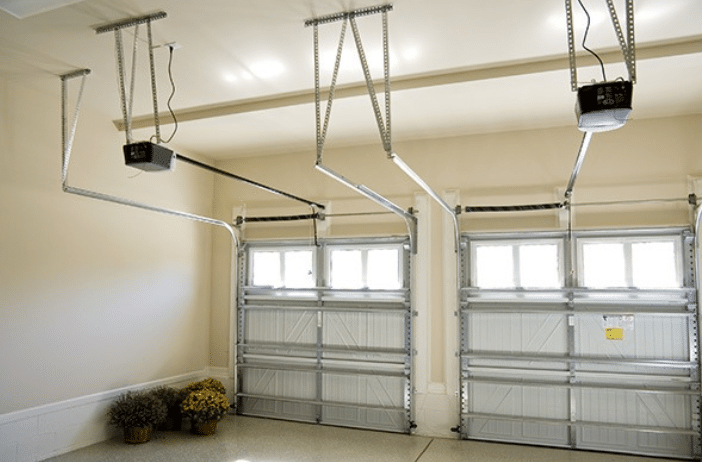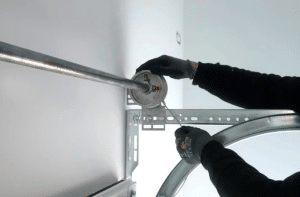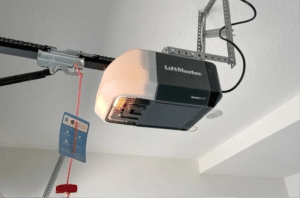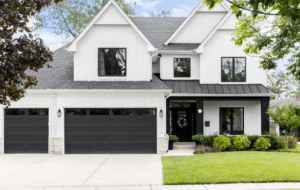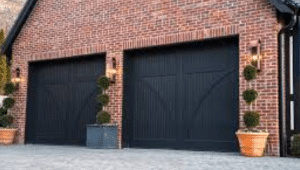A clear and simple guide to the parts of a garage door system. Understand how your garage door works and what each part does.
A garage door system consists of multiple parts that each serve an important function. Knowing how the parts work together can help when experiencing a mechanical issue or scheduling seasonal maintenance.
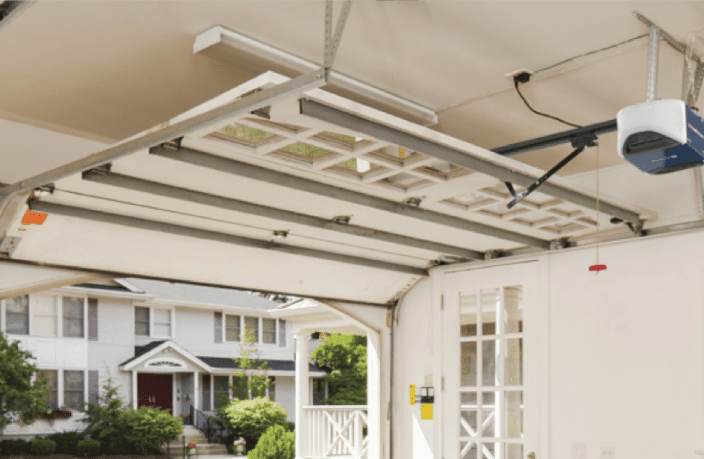
Knowing the basic components can help you spot problems early, extend the life of your system, and avoid unnecessary costs. Homeowners who understand the parts of a garage door system are better equipped to work with technicians and make informed decisions.
This guide breaks down the primary parts of a garage door system, explains their functions, and provides a clear layout to help you recognize each during repairs, upgrades, or inspections.
Essential Parts of a Garage Door System Explained
A garage door is more than just a large moving wall—it’s a complex mechanical system made up of several critical components that work together to ensure safe, efficient operation. Understanding each part helps homeowners maintain their garage doors properly and recognize when something isn’t working as it should. Below is a breakdown of the most essential parts of a garage door system, what they do, and why they matter.
1. Garage Door Panels
Door panels are the large, flat sections that make up the main surface of the garage door. Most modern garage doors are sectional, meaning they are made of multiple horizontal panels connected by hinges. These panels can be made from a variety of materials, including steel, wood, aluminum, or composite.
Function:
Door panels give the garage door its shape and design and allow it to bend as it moves along the track. They contribute to the garage’s insulation, durability, and visual appeal, which often makes up a significant portion of a home’s front elevation. Sectional panels make the door easier to repair since individual sections can be replaced if damaged.
2. Garage Door Hinges
Hinges are the metal joints that connect each of the garage door panels. Installed between the panels on both sides of the door, they allow the sections to pivot as the door moves along the curved tracks.
Function:
Hinges enable the smooth transition of the garage door from vertical to horizontal positions. Without well-functioning hinges, the door could bind or twist during movement. Different hinges are used at different panel levels, each designed to accommodate the specific bend required at that door section.
3. Garage Door Rollers
Rollers are small wheels, typically made of nylon, steel, or plastic, that are attached to brackets on the sides of each panel and run inside the tracks.
Function:
These wheels help guide the door moving up and down the tracks. High-quality rollers reduce noise and friction, allowing for smoother and quieter operation. Damaged or worn-out rollers can cause jerky movement, loud squeaks, or even derail the door from the tracks.
4. Garage Door Tracks
Tracks are the metal rails that run vertically on each side of the door frame and horizontally along the garage ceiling. They form a continuous path for the rollers to follow during operation.
Function:
The tracks ensure the garage door stays aligned and moves predictably when opening or closing. Proper alignment is crucial—bent or misaligned tracks can cause the door to bind, operate unevenly, or become stuck entirely. There are also horizontal tracks (mounted overhead) and vertical tracks (mounted along the wall), connected by curved brackets.
5. Garage Door Springs
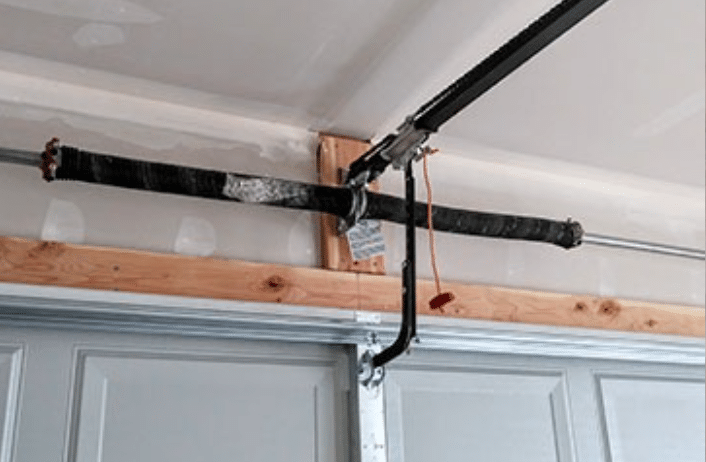
Garage doors use torsion springs (mounted above the door opening on a shaft) or extension springs (mounted along the horizontal tracks). These springs are under high tension and must be handled with extreme care.
Function:
Springs are essential for counterbalancing the weight of the garage door. Lifting a door—manually or with a motor—would be extremely difficult without them. Torsion springs provide a smoother, more controlled motion and are typically preferred for safety and longevity, while extension springs stretch and contract to assist with lifting.
6. Garage Door Cables
Lift cables are strong steel cables connected to the bottom brackets of the door. They wrap around drums at the top when the door opens and unwind as it closes.
Function:
The cables work with the springs to lift and lower the door safely. They carry much tension released from the springs and are critical to the door’s balance. Frayed or broken cables can lead to dangerous, uncontrolled door movements.
7. Garage Door Drums
Drums are grooved metal wheels located on either side of the torsion spring shaft.
Function:
They help wind and unwind the lift cables evenly as the door opens or closes. Properly functioning drums keep tension equal on both sides of the door, ensuring balanced movement. If the cable comes off the drum, it can cause the door to tilt or jam.
9. Garage Door Opener
The garage door opener is a motorized unit, typically mounted on the ceiling, that opens and closes the garage door via a drive mechanism. Common drive types include chain, belt, screw, and direct drive systems.
Function:
The opener automates the door’s operation and can be controlled via wall-mounted switches, handheld remotes, or smart devices. While it provides convenience and security, the opener relies on properly functioning springs and cables to work effectively. Modern openers also include features like battery backup, Wi-Fi connectivity, and programmable lighting.
10. Garage Door Safety Sensors
Also known as photo eyes, these are small devices mounted near the bottom of the tracks, one on each side of the door.
Function:
They emit an invisible beam of light between them. If the beam is interrupted by a person, pet, or object, the door will automatically stop and reverse. This safety feature is now standard on all openers manufactured after 1993 and is crucial for preventing accidents or injuries.
11. Garage Door Emergency Release Cord
A red pull cord is attached to the opener’s trolley mechanism.
Function:
The emergency release cord disengages the opener from the door, allowing for manual operation in the event of a power outage or mechanical failure. It should be used with care, especially when the door is in the open position, as the weight of the door can cause it to slam shut unexpectedly.
12. Garage Door Weather Seals
Flexible rubber or vinyl strare ips found at the bottom of the garage door and along the sides and top edges.
Function:
Weather seals protect the garage from outdoor elements, such as rain, snow, dust, and pests. They help insulate the garage and improve energy efficiency by reducing drafts. Worn or cracked seals can lead to moisture damage and higher energy costs.
Simple Maintenance Tips for Garage Door Components
Rollers and Hinges
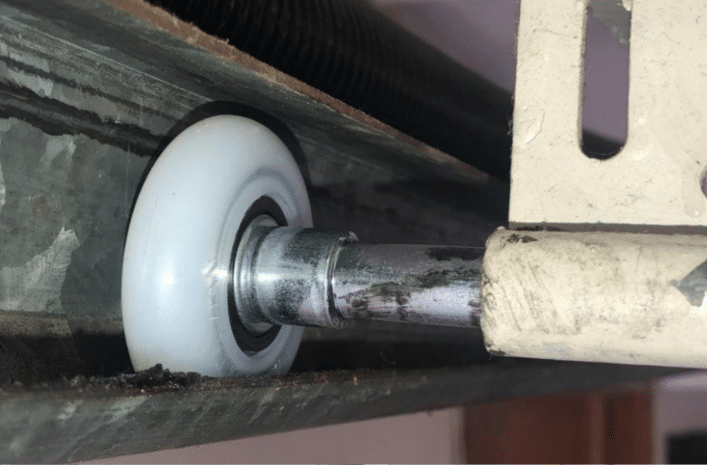
- Lubricate Twice a Year: Apply a silicone-based spray lubricant to rollers and hinges every six months. This reduces friction and ensures smooth, quiet operation.
- Inspect for Wear or Damage: Check for signs of wear, such as cracking, chipping, or bending. Replace any components that appear damaged to prevent strain on other parts of the system.
Springs and Cables
- Do Not Attempt DIY Repairs: Springs and cables are under extreme tension and can be very dangerous to handle. Avoid touching or adjusting them yourself.
- Schedule Professional Inspections Annually: Have a trained technician check the condition and tension of springs and cables once a year to ensure safe operation and identify any signs of fatigue or fraying.
Tracks
- Keep Tracks Clean: Wipe down the tracks regularly using a damp cloth to remove dust, dirt, and debris that could obstruct movement.
- Check Track Alignment: Misaligned tracks can cause the door to malfunction. Make sure both sides are parallel and firmly secured to the wall. If you notice gaps or wobbling, contact a professional for an adjustment.
Opener and Sensors
- Replace Batteries Annually: Change the remote and keypad batteries once a year to avoid unexpected failures.
- Clean and Align Sensors: Use a soft cloth to clean the photo-eye sensors located near the bottom of the door. Ensure they are facing each other directly and nothing obstructs the beam. Misalignment can prevent the door from closing properly.
Weather Seals
- Inspect Regularly: Check the rubber or vinyl weather seals at the bottom and sides of the garage door for cracks, brittleness, or gaps.
- Replace as Needed: If you feel drafts, see light coming through, or notice water marks or pest intrusion, it’s time to replace the seals to maintain energy efficiency and protection.
Frequently Asked Questions
What are the garage door parts?
Garage door parts include the panels, springs (torsion or extension), cables, rollers, tracks, hinges, and weather seals. The opener system includes a motor, rail, trolley, chain or belt drive, and safety sensors. Each part plays a role in the door’s movement, support, and safety.
What is the part called that opens the garage door?
The part that opens the garage door is called the garage door opener. A motorized unit drives a trolley along a rail to lift or lower the door. A remote, wall switch, or keypad typically controls the opener.
What are garage door sections?
Garage door sections are the horizontal panels that make up a sectional garage door. They are connected by hinges, allowing the door to bend and follow a curved track when opening. Depending on the door type, each section typically includes reinforcement struts and insulation.
What is included in a garage door?
A garage door includes panels, hinges, rollers, tracks, a spring system, cables, and weatherstripping. It also includes a garage door opener, remote controls, and safety sensors if motorized. Decorative hardware and insulation may be included based on design or function.
What is the bottom part of the garage door called?
The bottom part of a garage door is called the bottom section or bottom panel, and it typically has a bottom seal or astragal attached. This seal helps keep out water, pests, and debris, and cushions the door when it closes.
Conclusion
Understanding the parts of a garage door system is a valuable step in managing your home’s maintenance. Every part, from the large panels to the small sensors, contributes to safe and consistent operation.
Routine checks, minor upkeep, and understanding how each component works can prevent unexpected failures and costly repairs. When issues arise, it helps to know what to look for and what to avoid attempting without professional help.
If you’re unsure or dealing with a more serious garage door problem, it’s always best to contact professionals like Roadrunner Garage Doors.
End Note
Roadrunner Garage Doors is your trusted choice for high-quality garage door services across Texas. Our experienced team focuses on reliable solutions and timely service, handling everything from inspections to complex repairs.
As a locally owned company, we are proud of our commitment to customer care and our reputation for skilled work. Learn more about who we are on our About Us page.
Explore our photo gallery, check our service areas, including Frisco, Missouri City, and Austin, or follow us on Facebook, Twitter, and YouTube. For updates and tips, visit our blog.
Roadrunner Garage Doors
8616 4th Street, Frisco TX 75034
+17134738168

